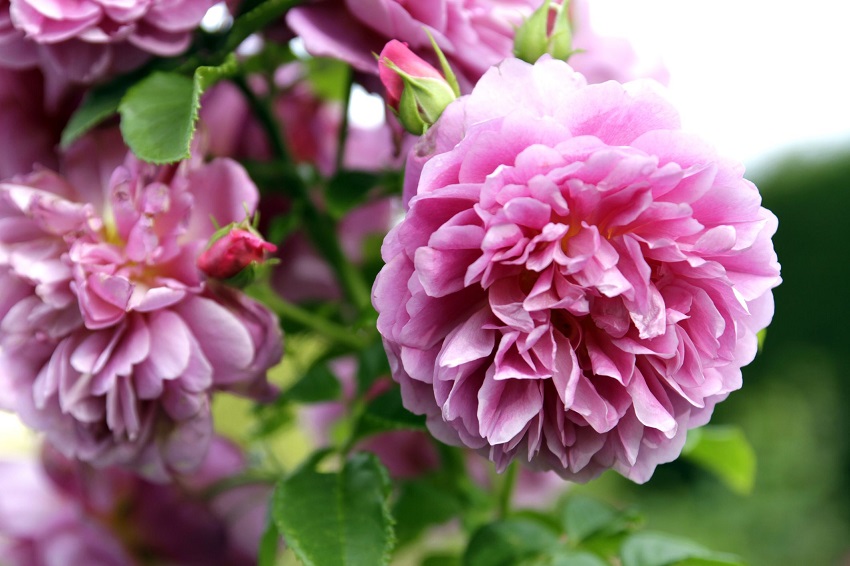Peonies are magnificent flowering plants that captivate gardeners with their exquisite blooms and enchanting fragrance. If you’re considering adding peonies to your garden, you may be wondering if they are easy to grow. In this article, we’ll delve into the world of peonies and explore their growing requirements, maintenance tips, and the rewards they offer. By the end, you’ll have a comprehensive understanding of peonies and feel confident about cultivating these stunning flowers in your own backyard.
The Charm of Peonies
Peony growth stages are essential to understand if you want to cultivate these stunning flowers successfully. Peonies have long been cherished for their elegance and charm. With their lush, ruffled petals and vibrant colors ranging from delicate pastels to bold and rich hues, peonies add a touch of luxury and grace to any garden. Their alluring fragrance fills the air and beckons both humans and pollinators alike. From classic herbaceous peonies to the tree peonies and intersectional hybrids, there is a vast array of peony varieties to choose from, ensuring there is a perfect match for every gardener’s taste.
Peony Growing Requirements
Sunlight and Location
Peonies thrive in full sun, so it’s crucial to choose a planting location that receives at least six hours of direct sunlight each day. Select a spot in your garden that is well-draining to prevent waterlogging, as excessive moisture can lead to root rot and other problems. The soil should be fertile and loamy, enriched with organic matter such as compost or well-rotted manure to ensure optimal growth.
Planting and Transplanting
The best time to plant peonies is during the fall season, preferably in September or October. Begin by preparing the soil, removing any weeds or debris and loosening it to a depth of about 12 inches. Dig a hole that is wide and deep enough to accommodate the peony’s root system comfortably. Place the peony in the hole, making sure the eyes (buds) are positioned no more than two inches below the soil surface. Backfill the hole gently, firming the soil around the roots.
If you need to transplant an established peony, it’s best to do so during the fall as well. Take care to preserve the plant’s root system, ensuring minimal disturbance. Transplanting can sometimes cause temporary setbacks, but with proper care, the peony will recover and flourish in its new location.
Watering and Fertilizing
While peonies are relatively low-maintenance plants, they do require consistent watering, especially during the initial establishment period. Provide them with approximately one inch of water per week, either through rainfall or manual irrigation. However, be cautious not to overwater, as peonies are susceptible to root rot in waterlogged conditions.
Fertilizing peonies is essential to support healthy growth and abundant blooms. Apply a balanced fertilizer, such as a 10-10-10 or 5-10-5 formula, in early spring before the plants emerge. Avoid applying excessive nitrogen, as it can result in lush foliage at the expense of flowers. Additionally, a top dressing of compost or well-rotted manure each spring can enrich the soil and provide a steady release of nutrients.
Maintenance Tips for Growing Peonies
Mulching
Mulching plays a vital role in maintaining optimal growing conditions for peonies. Apply a layer of organic mulch, such as straw or shredded bark, around the plants in early spring to conserve moisture, suppress weeds, and regulate soil temperature. Ensure that the mulch is not in direct contact with the peony stems to prevent potential rotting issues.
Support and Staking
As peonies produce large and often heavy blooms, it’s essential to provide them with support to prevent their stems from bending or breaking. Install sturdy stakes or use commercial peony rings early in the growing season to support the plants. Carefully tie the stems to the support structure, allowing the flowers to stand tall and proud.
Deadheading and Pruning
To encourage continuous blooming and maintain a neat appearance, deadhead faded peony flowers as soon as they wilt. Snip the spent blooms just above a healthy set of leaves or a bud to promote further growth. Pruning should be done in late fall after the first frost. Cut back the stems to ground level, removing any debris from the garden to minimize the risk of diseases.
The Rewards of Growing Peonies
Growing peonies is a truly rewarding experience. Apart from their stunning beauty, these resilient plants can grace your garden for decades, becoming a cherished heirloom for generations to come. The abundance of flowers they produce each year brings joy and a sense of accomplishment. Peonies also attract beneficial pollinators like bees and butterflies, contributing to the overall biodiversity of your garden ecosystem.
In conclusion, peonies are indeed a delightful addition to any garden. While they may require some care and attention, their captivating beauty and the gratification they bring far outweigh the effort. By providing the right growing conditions, performing regular maintenance tasks, and appreciating their unique charm, you can cultivate flourishing peony plants that will continue to enchant you year after year. So, why not embark on this enchanting journey and create your own peony paradise in your garden?


